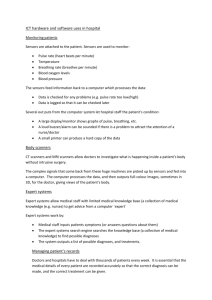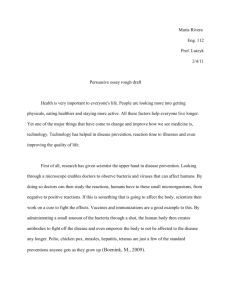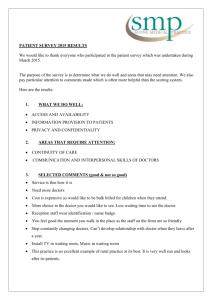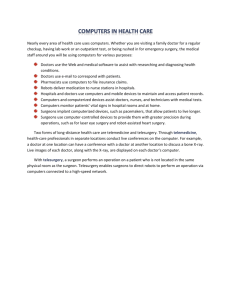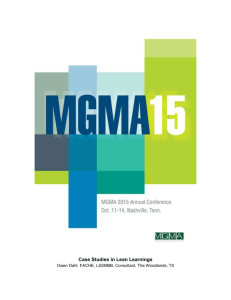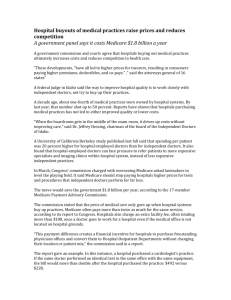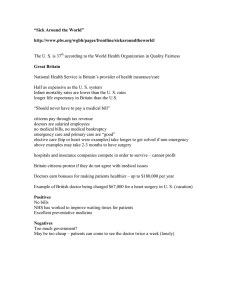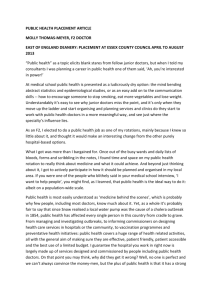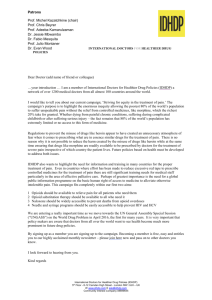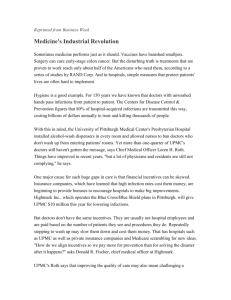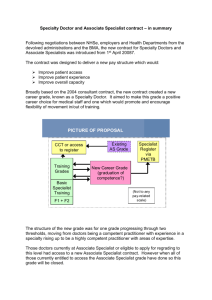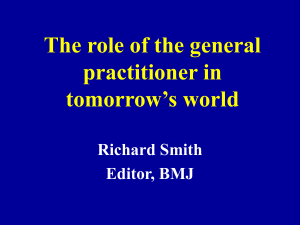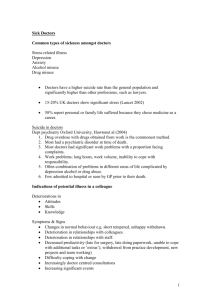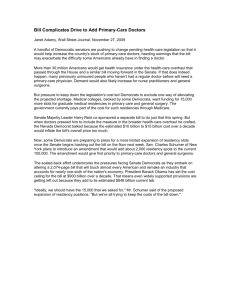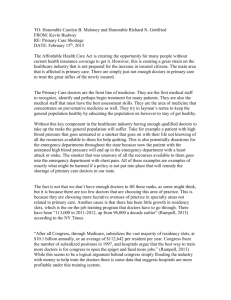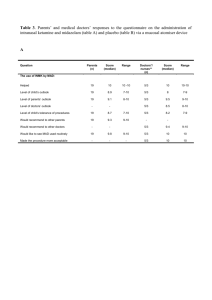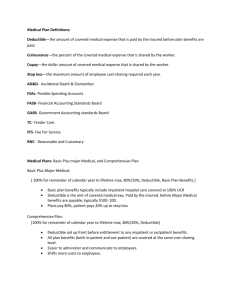Qs for Raviv
advertisement
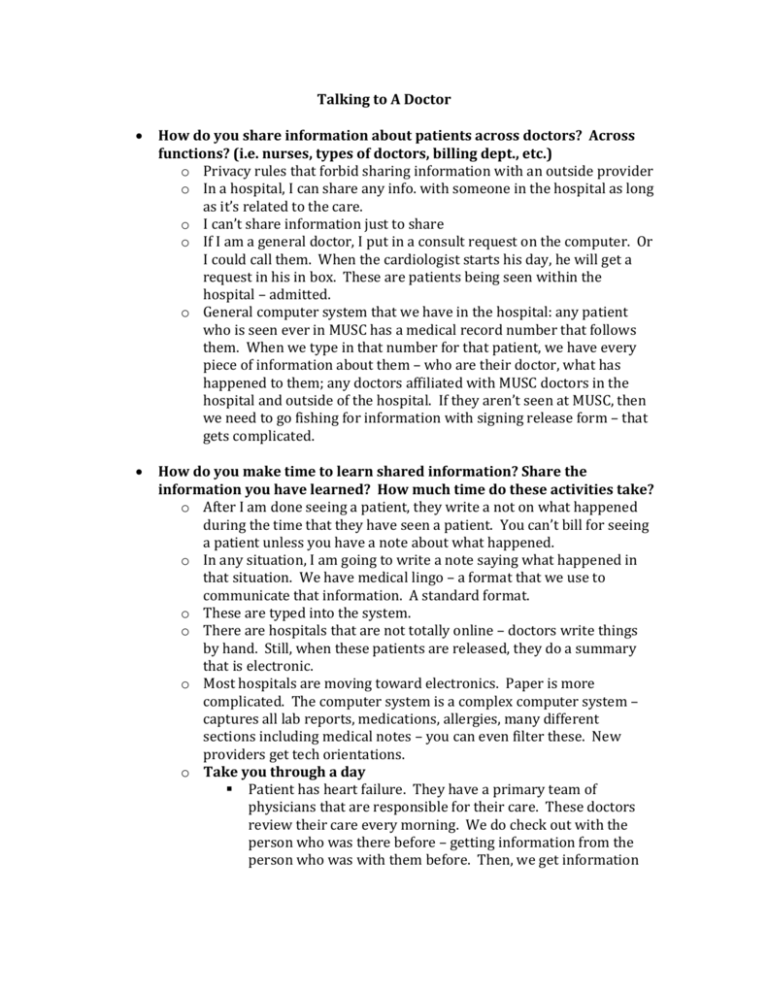
Talking to A Doctor How do you share information about patients across doctors? Across functions? (i.e. nurses, types of doctors, billing dept., etc.) o Privacy rules that forbid sharing information with an outside provider o In a hospital, I can share any info. with someone in the hospital as long as it’s related to the care. o I can’t share information just to share o If I am a general doctor, I put in a consult request on the computer. Or I could call them. When the cardiologist starts his day, he will get a request in his in box. These are patients being seen within the hospital – admitted. o General computer system that we have in the hospital: any patient who is seen ever in MUSC has a medical record number that follows them. When we type in that number for that patient, we have every piece of information about them – who are their doctor, what has happened to them; any doctors affiliated with MUSC doctors in the hospital and outside of the hospital. If they aren’t seen at MUSC, then we need to go fishing for information with signing release form – that gets complicated. How do you make time to learn shared information? Share the information you have learned? How much time do these activities take? o After I am done seeing a patient, they write a not on what happened during the time that they have seen a patient. You can’t bill for seeing a patient unless you have a note about what happened. o In any situation, I am going to write a note saying what happened in that situation. We have medical lingo – a format that we use to communicate that information. A standard format. o These are typed into the system. o There are hospitals that are not totally online – doctors write things by hand. Still, when these patients are released, they do a summary that is electronic. o Most hospitals are moving toward electronics. Paper is more complicated. The computer system is a complex computer system – captures all lab reports, medications, allergies, many different sections including medical notes – you can even filter these. New providers get tech orientations. o Take you through a day Patient has heart failure. They have a primary team of physicians that are responsible for their care. These doctors review their care every morning. We do check out with the person who was there before – getting information from the person who was with them before. Then, we get information directly from the patient, if that is possible. We also do a physical exam – this is all learning. After we examine the patient, we make decisions. Based on what we have learned, we are going to make decisions. We make a plan for this patient. We come up with a list of things that need to be done for this patient, including health and social services. All of the things that need to happen for that patient – can be a single or multiple day plan. The learning is constant. If we are having a difficult time putting together what the patient is dealing with, we go to the literature to look for information about what may be happening. We are constantly refreshing our base knowledge as we go. This happens during the work day. We are also at a teaching hospital. We have medical students and residents that do most of that grunt work and will present that information to the head doc. What works well about information sharing? What could be improved? What types of team meetings do doctors participate in? What are the goals of these meetings? o We have team rounds. After the morning rounds, we come together, divvy up responsibilities and talk about our day. There is no rule as to when there is patient information sharing time. Everyone does this differently. o We go patient by patient, discuss what is going on with the patient. The doctor may know what is going on. Our mission is education at MUSC – medical student and resident education is almost as important as patient care. o This meeting helps to inform your plan for the patients. It also helps to determine who us going to do what in the plan. How often do team meetings take place? What works well about team meetings? What could be improved? How do doctors continue to learn once they are practicing? How are these learning opportunities structured? Are their things that work well regarding continued learning? What could be improved?

